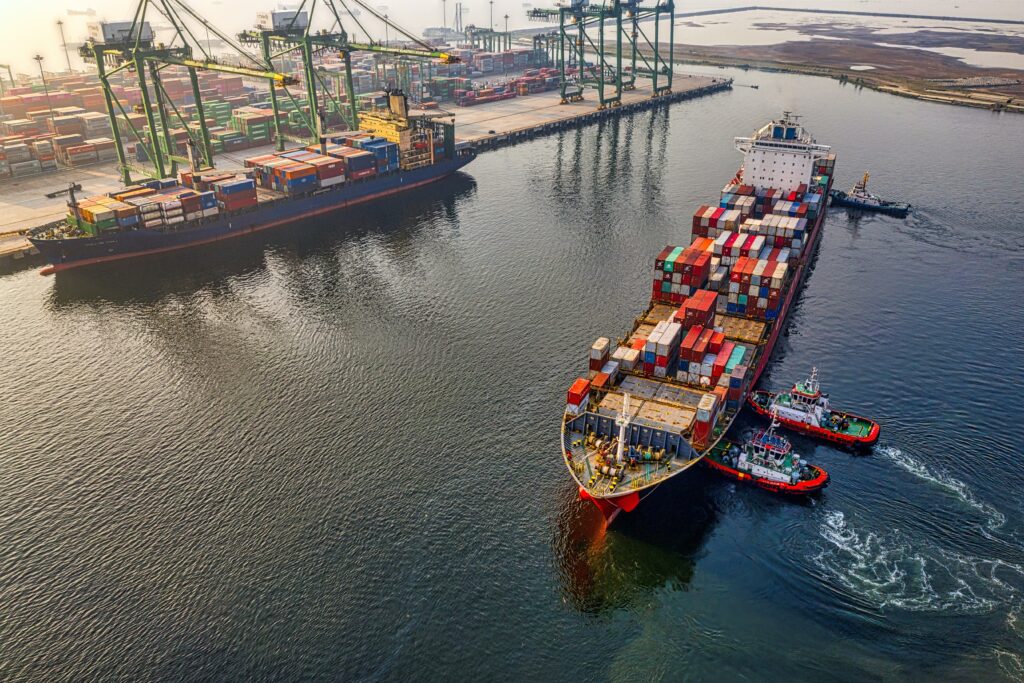
Port operations throughout the world were damaged when the pandemic occurred. The effects of COVID were significant and the problems have lingered. Supply chain disruptions, port congestion, cruise ship restrictions, budgets stretched to the limit, and limited resources – these are but a few disruptions that still plague port officials.
Now, however, there is an abundance of activity at American ports. Funding has been made available and positive changes are occurring rapidly. Collaboration between public and private-sector partners will soon be at an all-time high.
It is important to take note of what is happening at ports in America because the modernization that is needed to compete globally will require various types of expertise. Leading-edge technology, specialized engineering, construction, planning, design, lighting, power modernization, and project management – it will all be required. The goal is to launch a successful, efficient coordinated effort between public officials and private-sector contractors for the good of the country.
The Port of Seattle has $20 million to invest in port-related innovations. Immediate plans call for conversion of an historic ship supply building into a Maritime Innovation Center. Scheduled for completion in 2024, the facility will support the port’s goals to modernize port-related practices, seek new inventions, and solidify Washington’s leadership in the maritime industry.
The Port of Seattle will spend another $225 million on two phases of a long-term project. The first phase will include construction of 100,000 square feet of new industrial space designed to support local maritime and fishing industry suppliers. Over the next several years, another phase of the project will involve construction of an additional facility that will be three times as large.
The Seagirt Marine Terminal in Maryland will be upgraded and enhanced with a $34 million budget. The objective is to ensure that the port can compete aggressively with other East Coast ports. This funding covers work in the first phase of the modernization project, and additional is allocated for work on the port’s second phase which will include widening and deepening the terminal’s access points for larger container ships.
Officials in Alabama were recently awarded a $38 million federal grant, which will support two distinct kinds of work within the Port of Mobile. The Alabama State Port Authority will allocate approximately $20 million for construction work on a bridge that connects the port’s various terminals to the nearby intermodal container transfer facility. Then another $18 million will be used to improve utilities for a logistics park that will cover more than 120 acres within the port.
The Port of Galveston in Texas is experiencing ongoing, large-scale construction activities. Officials plan to spend $51.2 million on a sprawling Pelican Island project that will prepare the island for future development by building out its foundational infrastructure. Projects will include construction of an island-wide roadway, an LNG terminal, and an automobile processing roll-on/roll-off facility. Other funding will expand access to the interstate system through road and bridge networks and support the initial design of an interior roadway system.
Additionally, the Port of Galveston will expand the west end of its cargo facilities with a $61 million project. Specifically, the port will focus on outdated ship slips that cause damage and decay to the port’s infrastructure. To completely address the problems and begin modernization efforts, other initiatives include dredging, construction of fill-retaining structures, placement of fill, improvements to storm sewers, installation of flexible pavement, and replacement of a deteriorated bulkhead.
At the nation’s second busiest port in Long Beach, California, a federal grant of $52.3 million is funding work on a rail facility. The objective is to improve rail connectivity between the port and a nearby transit corridor. This will make the former less dependent on carbon-emitting trucks that transport cargo. The cost of this project, which is currently in the design stage, is estimated at $1.5 billion.
Funding for port projects is abundant, and companies offering services to assist port officials with modernization efforts are in high demand. The country’s Maritime Administration is soliciting applications for funding from the $450 million available in Port Infrastructure Development Program grants last year. Hundreds of millions more is already earmarked for projects that will usher in innovation, sophistication, and modernization.
Modern, efficient port operations will ensure that America stays competitive globally. That task is critically important, and there is much to be done. Private-sector firms equipped to help with this national task are urged to get involved.
Mary Scott Nabers is president and CEO of Strategic Partnerships Inc., a business development company specializing in government contracting and procurement consulting throughout the U.S. Her recently released book, Inside the Infrastructure Revolution: A Roadmap for Building America, is a handbook for contractors, investors and the public at large seeking to explore how public-private partnerships or joint ventures can help finance their infrastructure projects.



